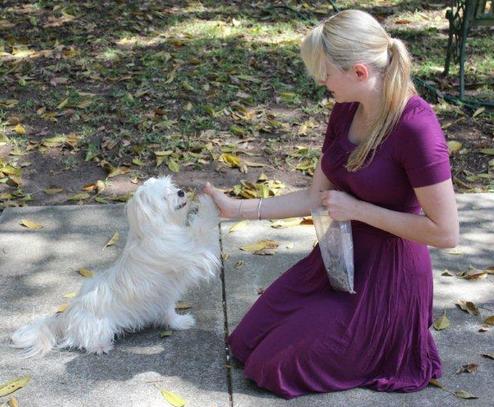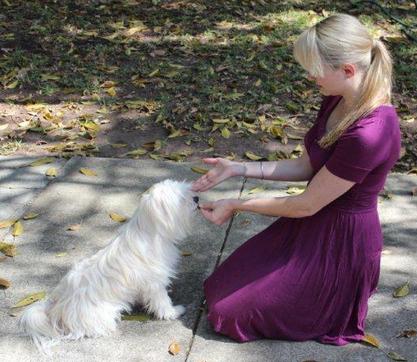If you want to change your pet’s behaviour, why use harsh techniques when gentle ones will work better?

What does the rip-top from a cat can and your postie have in common? They are both expert pet trainers.
For instance, Rumbles the Burmese quickly learnt that food was likely to materialise in her bowl when she heard the characteristic ripping, splitting sound when her owner opened Rumbles favourite can of food
The noise and food were regularly linked together so she quickly learnt that if she ran to the kitchen when she heard the noise, her behaviour was rewarded with food.
The postie, on his motor bike, is also a good dog trainer. Just ask Gizmo, the Bearded Collie. Gizmo knows that if he barks at the postie, the postie always ‘runs away’. In reality, the postman is just continuing his normal route. By ‘running away’, the postie positively rewards Gizmo’s barking. Gizmo thinks the bark-and-chase routine is a real hoot. To him, the whole scenario is joyful – so why not continue? His owners are not so sure.
For Rumbles and Gizmo, the can opener and the postie are agents of positive reinforcement. These ‘agents’ train each animal, progressively, to perform a particular behaviour.
But did the postie example make you think – just for a moment? You could argue that Gizmo is scared by the appearance of the postie and that by barking at it, the unpleasantness of the postie is removed. That’s actually negative reinforcement – where a behaviour is strengthened when something unpleasant is removed when the behaviour is practiced.
That’s confusing!
Reinforcement
You can use reinforcement in many practical ways to change your pet’s behaviour for the better.
When you reinforce a pet’s behaviour, the behaviour becomes stronger and is more likely to occur again. Reinforcement is a very strong training and behaviour conditioning tool. There are two forms – positive and negative reinforcement.
Positive reinforcement is where the performance of a behaviour results in a pleasant outcome. Of course, Gizmo’s owners would much prefer that Gizmo had positively reinforced a better behaviour than his annoying, frantic and incessant barking at the postman!
Negative reinforcement is different. It is where your pet strengthens a behaviour by moving away from, or avoiding, an unpleasant stimulus.

For instance, if you are speeding down a freeway doing 120 kilometers per hour, but the speed limit is 110 kph what happens when you see a police camera car parked on the side of the freeway?
You immediately lift your foot from the accelerator and feel relieved as you slip past at 109 kph, thus avoiding an embarrassing fine.
The police camera car negatively reinforces your ‘driving under the speed limit’ behaviour.
Contents of Next Page
1. Positive Reinforcement in Action – Jessie the Terrier – the teeth-gnashing terror
2. The difference between positive punishment and negative punishment – which one should you use?
3. Negative punishment and noise phobias
4. ‘Fur Ball’ and the Vege Patch how to keep cats away humanely
